 Narrative non-fiction is generally the only type of non-fiction we review here at Wonderland, 'cause we're all about the story. This novel isn't non-fiction, despite the jacket copy calling it an authentic immigrant story. Those writing historical... Read the rest of this post
Narrative non-fiction is generally the only type of non-fiction we review here at Wonderland, 'cause we're all about the story. This novel isn't non-fiction, despite the jacket copy calling it an authentic immigrant story. Those writing historical... Read the rest of this post
Viewing: Blog Posts Tagged with: floods, Most Recent at Top [Help]
Results 26 - 50 of 83
Blog: Finding Wonderland: The WritingYA Weblog (Login to Add to MyJacketFlap)
JacketFlap tags: Grief, Realistic Fiction, Multicultural Fiction, Problem Novels, TSD Review, Chosen family fiction, Add a tag
Blog: Finding Wonderland: The WritingYA Weblog (Login to Add to MyJacketFlap)
JacketFlap tags: Multicultural Fiction, Ethnicity and YA Literature, TSD, Fantasy/Sci-Fi, Add a tag
Blog note: In light of the scary fact that no one has actually spoken to Harper Lee from HarperCollins in person... we've taken down our happy piece on her new novel. Slate has a lot to say about whether or not the project should go forward, and... Read the rest of this post
Blog: Finding Wonderland: The WritingYA Weblog (Login to Add to MyJacketFlap)
JacketFlap tags: Reviews, Graphic Novels, Adventure, Diversity, Comix, Fantasy/Sci-Fi, Multicultural Fiction, AF, Add a tag
 Summary: I was excited, intrigued, and a little wary when I heard that the new reboot of Ms. Marvel was going to be a Pakistani-American, Muslim teenage girl. I cheered because young women of South Asian descent would finally be represented in the... Read the rest of this post
Summary: I was excited, intrigued, and a little wary when I heard that the new reboot of Ms. Marvel was going to be a Pakistani-American, Muslim teenage girl. I cheered because young women of South Asian descent would finally be represented in the... Read the rest of this post
Blog: Finding Wonderland: The WritingYA Weblog (Login to Add to MyJacketFlap)
JacketFlap tags: Adventure, Romance, Fantasy/Sci-Fi, Multicultural Fiction, Dystopian, Faith/Fiction, TSD Review, Post-Apocalypse Fiction, Add a tag
 It's a blustery, rainy day, and I have hot tea and lemon and have just finished a novella I've been looking forward to for weeks. All is well in the Wonderland treehouse, people. Happy, happy times. I'm generally not attracted to prequels as much as... Read the rest of this post
It's a blustery, rainy day, and I have hot tea and lemon and have just finished a novella I've been looking forward to for weeks. All is well in the Wonderland treehouse, people. Happy, happy times. I'm generally not attracted to prequels as much as... Read the rest of this post
Blog: Finding Wonderland: The WritingYA Weblog (Login to Add to MyJacketFlap)
JacketFlap tags: Nonfiction, Multimedia, Multicultural Fiction, Problem Novels, Sibling Fiction, TSD Review, Add a tag
 This book is non-fiction, and was originally self-published, because the filmmaker Nick Gray was so convinced this was a story we should know. Nonfiction what we usually review on the blog, but though this particular tale is about two real boys,... Read the rest of this post
This book is non-fiction, and was originally self-published, because the filmmaker Nick Gray was so convinced this was a story we should know. Nonfiction what we usually review on the blog, but though this particular tale is about two real boys,... Read the rest of this post
Blog: Finding Wonderland: The WritingYA Weblog (Login to Add to MyJacketFlap)
JacketFlap tags: Graphic Novels, Realistic Fiction, Multicultural Fiction, TSD Review, Add a tag
 This is a story about child soldiers in Uganda, in Africa, and about Kony Joseph. It's fictional, but based on a true account. Despite the boatload of honors and awards (Popular Paperbacks for Young Adults 2014, YALSA Great Graphic Novels for Teens... Read the rest of this post
This is a story about child soldiers in Uganda, in Africa, and about Kony Joseph. It's fictional, but based on a true account. Despite the boatload of honors and awards (Popular Paperbacks for Young Adults 2014, YALSA Great Graphic Novels for Teens... Read the rest of this post
Blog: Finding Wonderland: The WritingYA Weblog (Login to Add to MyJacketFlap)
JacketFlap tags: Middle Grade, Mystery, Suspense, Multicultural Fiction, TSD Review, Adventure, Add a tag
 I received this book courtesy of Full Fathom Five Digital and while normally I prefer digital books which have paper counterparts, I made an exception this time, for Reasons. FFF Digital is an imprint of Full Fathom Five, the content creation... Read the rest of this post
I received this book courtesy of Full Fathom Five Digital and while normally I prefer digital books which have paper counterparts, I made an exception this time, for Reasons. FFF Digital is an imprint of Full Fathom Five, the content creation... Read the rest of this post
Blog: Finding Wonderland: The WritingYA Weblog (Login to Add to MyJacketFlap)
JacketFlap tags: Diversity, Ethnicity and YA Literature, Happenings, What We Do, Who We Are, Multicultural Fiction, Kidlitcon, Add a tag
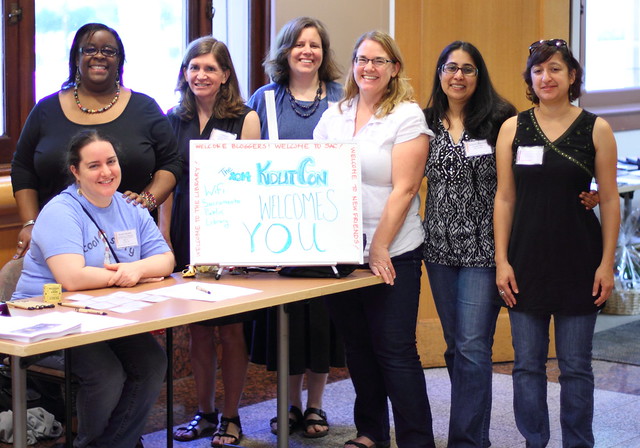 KidLitCon: Brought to you by these fine people.l-r: Maureen Kearney, seated. Standing, me (aka tanita), Jen Robinson, Charlotte Taylor, Melissa Fox, Reshama Deshmukh, and Sarah, aka aquafortis. Can't remember the last time I was more excited that... Read the rest of this post
KidLitCon: Brought to you by these fine people.l-r: Maureen Kearney, seated. Standing, me (aka tanita), Jen Robinson, Charlotte Taylor, Melissa Fox, Reshama Deshmukh, and Sarah, aka aquafortis. Can't remember the last time I was more excited that... Read the rest of this post
Blog: Finding Wonderland: The WritingYA Weblog (Login to Add to MyJacketFlap)
JacketFlap tags: Adventure, Diversity, Romance, Fantasy/Sci-Fi, Steampunk, Multicultural Fiction, A Cybilism?, TSD Review, Add a tag
 If you do a search on "South Asian Steampunk," you get pictures of some fab cosplay, but buptkus on books. (I actually found a good article on the inherent problems of "Asian steampunk," though, so score, but no cigar on the books...) Seeing a cover... Read the rest of this post
If you do a search on "South Asian Steampunk," you get pictures of some fab cosplay, but buptkus on books. (I actually found a good article on the inherent problems of "Asian steampunk," though, so score, but no cigar on the books...) Seeing a cover... Read the rest of this post
Blog: Finding Wonderland: The WritingYA Weblog (Login to Add to MyJacketFlap)
JacketFlap tags: Magical Realism, Multicultural Fiction, Sibling Fiction, Faith/Fiction, TSD Review, Diversity, Ethnicity and YA Literature, Mythology, Fantasy/Sci-Fi, Add a tag
 Come, Best Beloved, and sit you by my feet. I shall tell you a tale such as sister Scheherazade could have scarce imagined. A tale of wonders, of deeds both great and grievous, of courage that defies description, and above all, Child of Adam, I... Read the rest of this post
Come, Best Beloved, and sit you by my feet. I shall tell you a tale such as sister Scheherazade could have scarce imagined. A tale of wonders, of deeds both great and grievous, of courage that defies description, and above all, Child of Adam, I... Read the rest of this post
Blog: Finding Wonderland: The WritingYA Weblog (Login to Add to MyJacketFlap)
JacketFlap tags: Reviews, Graphic Novels, Humor, Fantasy/Sci-Fi, Multicultural Fiction, AF, TSD Review, Add a tag
 Welcome to another installment of Reviews in Tandem, where we both have our say about a book we've each read in an informal back-and-forth discussion. This is going to be a shorter review than many, because it's a graphic novel, and it's too easy to... Read the rest of this post
Welcome to another installment of Reviews in Tandem, where we both have our say about a book we've each read in an informal back-and-forth discussion. This is going to be a shorter review than many, because it's a graphic novel, and it's too easy to... Read the rest of this post
Blog: A Fuse #8 Production (Login to Add to MyJacketFlap)
JacketFlap tags: Reviews, reissues, realistic fiction, multicultural fiction, abrams, Amulet Books, middle grade realistic fiction, multicultural middle grade, Tom Angleburger, Reviews 2014, 2014 reviews, 2014 middle grade fiction, 2014 realistic fiction, Add a tag
Here’s something I’ve never done before. For years I’ve been waiting for the moment when a book I loved and reviewed dipped out of print only to come back again. Since I’ve only been doing this gig since 2006 I wasn’t sure what that first book would be. Then, this year, I got my answer. Back in October of 2007 I reviewed a book by a newcomer going by the moniker of Sam Riddleberger. The book? The Qwikpick Adventure Society. I absolutely adored it, floored by some of the new things it was doing. Years passed and no one paid the book the appropriate amount of attention it deserved. Then Mr. Riddleberger decided to publish under his real name, Tom Angleberger, and next thing you know he’s written a little book by the name of The Strange Case of Origami Yoda and the world was never the same. What with his earlier efforts out of print and his name so incredibly bankable, I had high hopes that this might not be the last we’d seen of Mr. Riddleberger/Angleberger. Then this year, behold! Do mine eyes deceive me? No! It’s back! New cover, new title, old book.
So for today’s Flashback Wednesday we’re going to reprint that old review I did of the book . . . slightly modified. There are a couple mentions in the original review of things published “this year” that had to be updated. I’m going to keep the parts about the rarity of trailer park kids that aren’t abused, though in the comments of my original review Genevieve mentioned that The Higher Power of Lucky could be considered another alternative. Fair enough.
Enjoy!
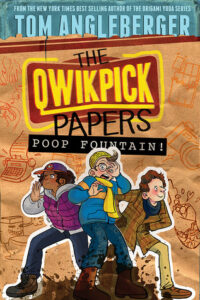 As a children’s book reviewer there is one fact that you must keep at the forefront of your mind at all times: You are not a kid. Not usually anyway. And because you are not a kid, you are not going to read a book the way a kid does. I keep talking in my reviews about how your own personal prejudices affect your interpretation of the book in front of you, and it’s bloody true. I mean, take scatological humor in all its myriad forms. When I read How to Eat Fried Worms as an adult, I didn’t actually expect the hero to eat worms (let alone 30+ of them). And when I read Out of Patience by Brian Meehl I really enjoyed it until the moment when the local fertilizer plant became… well, you’d have to read the book to grasp the full horror of the situation. Actually, Out of Patience was the title I kept thinking of as I got deeper and deeper into The Qwikpick Papers. Both books are funny and smart and both involve gross quantities of waste to an extent you might never expect. I am an adult. I have a hard time with poop. Poop aside (and that’s saying something) there’s a lot of great stuff going on in this book. It’s definitely a keeper, though it may need to win over its primary purchasing audience, adults.
As a children’s book reviewer there is one fact that you must keep at the forefront of your mind at all times: You are not a kid. Not usually anyway. And because you are not a kid, you are not going to read a book the way a kid does. I keep talking in my reviews about how your own personal prejudices affect your interpretation of the book in front of you, and it’s bloody true. I mean, take scatological humor in all its myriad forms. When I read How to Eat Fried Worms as an adult, I didn’t actually expect the hero to eat worms (let alone 30+ of them). And when I read Out of Patience by Brian Meehl I really enjoyed it until the moment when the local fertilizer plant became… well, you’d have to read the book to grasp the full horror of the situation. Actually, Out of Patience was the title I kept thinking of as I got deeper and deeper into The Qwikpick Papers. Both books are funny and smart and both involve gross quantities of waste to an extent you might never expect. I am an adult. I have a hard time with poop. Poop aside (and that’s saying something) there’s a lot of great stuff going on in this book. It’s definitely a keeper, though it may need to win over its primary purchasing audience, adults.
Lyle Hertzog is going to level with you right from the start. In this story he and his friends, “didn’t stop a smuggling ring or get mixed up with the mob or stop an ancient evil from rising up and spreading black terror across Crickenburg.” Nope. This is the story of Lyle, Dave, and Marilla and their club’s first adventure. The kids say that they’re The Qwikpick Adventure Society because they meet regularly in the break room of the local Qwikpick convenience store where Lyle’s parents work. When it occurs to the three that they’ll all be available to hang out on Christmas Day, they decide to do something extraordinary. Something unprecedented. And when Marilla discovers that the local “antiquated sludge fountain” at the Crickenburg sewer plant is about to be replaced, they know exactly what to do. They must see the poop fountain before it is gone. The result is a small adventure that is exciting, frightening, and very very pungent.
Someone once told me that this book reminded them of Stand By Me, “except no dead bodies and no Wil Wheaton.” They may be on to something there. Author Tom Angleberger works the relationships between the kids nicely. It’s a little hard to get into the heads of all the characters considering that we’re seeing everything through Lyle’s point of view, but the author does what he can. As for the “sludge fountain” itself, kids looking for gross moments will not be disappointed. You might be able to sell it to their parents with the argument that it’s actually rather informative and factual on this point (though I suggest that you play up the relationship aspect instead).
There are few kid-appropriate taboo topics out there, but if I was going to suggest one I might say it was the issue of class. Oh, you’ll get plenty of books where a kid lives a miserable life in a trailer park and gets teased by the rich/middle class kids in their class about it, sure. Now name all the books you can think of where the main characters live in a trailer park and that’s just their life. Or have parents that work in a convenience store and there isn’t any alcohol abuse, physical abuse, emotional abuse, etc. I swear, a kid who actually lived in a trailer park these days who tried to find a book containing kids like themselves would have to assume that abuse was the norm rather than the exception. So when I saw that both Lyle and Marilla lived in a trailer park and it wasn’t a big deal, that was huge for me. Also, sometimes a book with kids of different religions or ethnicities will make a big deal about the fact. Here, Lyle’s Christian, Dave’s Jewish, and Marilla’s a Jehovah’s Witness and not white but not identified as anything in particular. Quick! Name all the Jehovah’s Witnesses you’ve encountered in children’s books where the story wasn’t ALL about being a Jehovah’s Witness! Riddleburger is making people just people. What a concept.
I’ve been talking a lot this year about books that don’t slot neatly into categories. The kinds of books that mix genres and styles. The Qwikpick Papers will be classed as fiction, no question about it, but its prolific use of photographs certainly separates it from the pack. For example, there’s a moment when the kids are trying to figure out what to do for Christmas. One of them suggests opening a fifty-gallon drum of banana puree that’s been sitting behind an empty Kroger store and there, lo and behold, is an actual honest-to-goodness photograph of a rusty, decaying, very real banana puree barrel. I don’t know whether to hope that Mr. Angleberger took the picture years ago and was just itching for a chance to get to use it, or that he created the barrel himself for the sole purpose of including a photo of it in his book. I also enjoyed the hand-drawn portions. The comic strip All-Zombie Marching Band deserves mention in and of itself (though technically William Nicholson’s The Wind Singer did it too).
I say that the poop, the sheer amount of it, will turn off a lot of adults. At the same time though there are plenty of moments that will lure the grown-ups back in again. Particularly librarians. Particularly librarians that have ever attempted an origami craft with a bunch of kids. For these brave men and women Lyle’s line about the process of doing an unfamiliar animal will ring true. “You follow the instructions through like thirty-four steps and all of a sudden there’s this funky zigzag arrow and on the next page it has turned from a lump of paper into a horse with wings.” YES! Exactly! Thank you!
All in all, I’m a fan. The characters ring true, the dialogue is snappy, the unique format will lure in reluctant readers, and talk about a title custom made for booktalking! There’s not a kid alive today who wouldn’t want to read the book when confronted with the plot. It has ups. It has downs. It has a great sense of place and a whole lot of poop. Take all angles into consideration when considering this book. On my part, I like it and that is that.
On shelves now.
Like This? Then Try:
- Out of Patience by Brian Meehl
- How to Eat Fried Worms by Thomas Rockwell
- Poop Happened! A History of the World From the Bottom Up by Sarah Albee
Blog: A Fuse #8 Production (Login to Add to MyJacketFlap)
JacketFlap tags: Reviews, middle grade fiction, Best Books, Jacqueline Woodson, verse novels, multicultural fiction, middle grade historical fiction, fictional memoirs, multicultural middle grade, New York books, middle grade verse novels, Best Books of 2014, Reviews 2014, 2014 reviews, 2014 middle grade fiction, 2015 Newbery contender, 2014 historical fiction, Add a tag
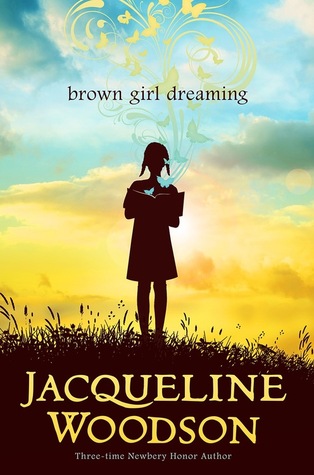 brown girl dreaming
brown girl dreaming
By Jacqueline Woodson
Nancy Paulsen Books (an imprint of Penguin)
$16.99
ISBN: 978- 0399252518
Ages 9-12
On shelves August 28th
What does a memoir owe its readers? For that matter, what does a fictionalized memoir written with a child audience in mind owe its readers? Kids come into public libraries every day asking for biographies and autobiographies. They’re assigned them with the teacher’s intent, one assumes, of placing them in the shoes of those people who found their way, or their voice, or their purpose in life. Maybe there’s a hope that by reading about such people the kids will see that life has purpose. That even the most high and lofty historical celebrity started out small. Yet to my mind, a memoir is of little use to child readers if it doesn’t spend a significant fraction of its time talking about the subject when they themselves were young. To pick up brown girl dreaming by Jacqueline Woodson is to pick up the world’s best example of precisely how to write a fictionalized memoir. Sharp when it needs to be sharp, funny when it needs to be funny, and a book that can relate to so many other works of children’s literature, Woodson takes her own life and lays it out in such a way that child readers will both relate to it and interpret it through the lens of history itself. It may be history, but this is one character that will give kids the understanding that nothing in life is a given. Sometimes, as hokey as it sounds, it really does come down to your dreams.
Her father wanted to name her “Jack” after himself. Never mind that today, let alone 1963 Columbus, Ohio, you wouldn’t dream of naming a baby girl that way. Maybe her mother writing “Jacqueline” on her birth certificate was one of the hundreds of reasons her parents would eventually split apart. Or maybe it was her mother’s yearning for her childhood home in South Carolina that did it. Whatever the case, when Jackie was one-years-old her mother took her and her two older siblings to the South to live with their grandparents once and for all. Though it was segregated and times were violent, Jackie loved the place. Even when her mother left town to look for work in New York City, she kept on loving it. Later, her mother picked up her family and moved them to Brooklyn and Jackie had to learn the ways of city living versus country living. What’s more, with her talented older siblings and adorable baby brother, she needed to find out what made her special. Told in gentle verse and memory, Jacqueline Woodson expertly recounts her own story and her own journey against a backdrop of America’s civil rights movement. This is the birth of a writer told from a child’s perspective.
You might ask why we are referring to this book as a work of historical fiction, when clearly the memoir is based in fact. Recently I was reading a piece in The New Yorker on the novelist Edward St. Aubyn. St. Aubyn found the best way to recount his own childhood was through the lens of fiction. Says the man, “I wanted the freedom and the sublimatory power of writing a novel . . . And I wanted to write in the tradition which had impressed me the most.” Certainly there’s a much greater focus on what it means to be a work of nonfiction for kids in this day and age. Where in the past something like the Childhood of Famous Americans series could get away with murder, pondering what one famous person thought or felt at a given time, these days we hold children’s nonfiction to a much higher standard. Books like Vaunda Micheaux Nelson’s No Crystal Stair, for example, must be called “fiction” for all that they are based on real people and real events. Woodson’s personal memoir is, for all intents and purposes, strictly factual but because there are times when she uses dialogue to flesh out the characters and scenes the book ends up in the fiction section of the library and bookstore. Like St. Aubyn, Woodson is most comfortable when she has the most freedom as an author, not to be hemmed in by a strict structural analysis of what did or did not occur in the past. She has, in a sense then, mastered the art of the fictionalized memoir in a children’s book format.
Because of course in fiction you can give your life a form and a function. You can look back and give it purpose, something nonfiction can do but with significantly less freedom. There is a moment in Jackie’s story when you get a distinct sense of her life turning a corner. In the section “grown folks’ stories” she recounts hearing the tales of the old people then telling them back to her sister and brother in the night. “Retelling each story. / Making up what I didn’t understand / or missed when voices dropped too low . . . / Then I let the stories live / inside my head, again and again / until the real world fades back / into cricket lullabies / and my own dreams.” If ever you wanted a “birth of a writer” sequence in a book, this would be it.
At its heart, that’s really what brown girl dreaming is about. It’s the story of a girl finding her voice and her purpose. If there’s a theme to children’s literature this year it is in the relationship between stories and lies. Jonathan Auxier’s The Night Gardener and Margi Preus’s West of the Moon both spend a great deal of time examining the relationship between the two. Now brown girl dreaming joins with them. When Jackie’s mother tells her daughter that “If you lie . . . one day you’ll steal” the child cannot reconcile the two. “It’s hard to understand how one leads to the other, / how stories could ever / make us criminals.” It’s her mother that equates storytelling with lying, even as her uncle encourages her to keep making up stories. As it is, I can think of no better explanation of how writers work then the central conundrum Jackie is forced to face on her own. “It’s hard to understand / the way my brain works – so different / from everybody around me. / How each new story / I’m told becomes a thing / that happens, / in some other way / to me . . . !”
The choice to make the book a verse novel made sense in the context of Ms. Woodson’s other novels. Verse novels are at their best when they justify their form. A verse novel that’s written in verse simply because it’s the easiest way to tell a long story in a simple format often isn’t worth the paper it’s printed on. Fortunately, in the case of Ms. Woodson the choice makes infinite sense. Young Jackie is enamored of words and their meanings. The book isn’t told in the first person, but when we consider that she is both subject and author then it’s natural to suspect that the verse best shows the lens through which Jackie, the child, sees the world.
It doesn’t hurt matters any that the descriptive passages have the distinct feeling of poems to them. Individual lines are lovely in and of themselves, of course. Lines like “the heat of summer / could melt the mouth / so southerners stayed quiet.” Or later a bit of reflection on the Bible. “Even Salome intrigues us, her wish for a man’s head / on a platter – who could want this and live / to tell the story of that wanting?” But full-page written portions really do have the feel of poems. Like you could pluck them out of the book and display them and they’d stand on their own, out of context. The section labeled “ribbons” for example felt like pure poetry, even as it relayed facts. As Woodson writes, “When we hang them on the line to dry, we hope / they’ll blow away in the night breeze / but they don’t. Come morning, they’re right where / we left them / gently moving in the cool air, eager to anchor us / to childhood.” And so we get a beautiful mixing of verse and truth and fiction and memoir at once.
It was while reading the book that I got the distinct sense that this was far more than a personal story. The best memoirs, fictionalized or otherwise, are the ones that go beyond their immediate subjects and speak to something greater than themselves. Ostensibly, brown girl dreaming is just the tale of one girl’s journey from the South to the North and how her perceptions of race and self changed during that time. But the deeper you get into the book the more you realize that what you are reading is a kind of touchstone for other children’s books about the African-American experience in America. Turn to page eight and a reference to the Woodsons connections to Thomas Woodson of Chillicothe leads you directly to Jefferson’s Sons by Kimberly Brubaker Bradley. Page 32 and the trip from North to South and the deep and abiding love for the place evokes The Watsons Go to Birmingham – 1963. Page 259 and the appearance of The Jackson Five and their Afros relates beautifully to Rita Williams-Garcia’s P.S. Be Eleven. Page 297 and a reference to slaves in New York City conjures up Chains by Laurie Halse Anderson. Even Jackie’s friend Maria has a story that ties in nicely to Sonia Manzano’s The Revolution of Evelyn Serrano. I even saw threads from Woodson’s past connect to her own books. Her difficulty reading but love of words conjures up Locomotion. Visiting her uncle in jail makes me think of Visiting Day as well as After Tupac and D Foster. And, of course, her personal history brings to mind her Newbery Honor winning picture book Show Way (which, should you wish to do brown girl dreaming in a book club, would make an ideal companion piece).
It’s not just other books either. Writers are advised to write what they know and that their family stories are their history. But when Woodson writes her history she’s broadening her scope. Under her watch her family’s history is America’s history. Woodson’s book manages to tie-in so many moments in African-American history that kids should know about. Segregation, marches, Jesse Jackson, Martin Luther King Jr. and Malcolm X. One thing I really appreciated about the book was that it also looked at aspects of some African-American life that I’ve just never seen represented in children’s literature before. Can you honestly name me any other books for kids where the children are Jehovah’s Witnesses? Aside from Tom Angleberger’s The Qwikpick Papers I’m drawing a blank.
The flaws? Well it gets off to a slow start. The first pages didn’t immediately grab me, and I have to hope that if there are any kids out there who read the same way that I do, with my immature 10-year-old brain, that they’ll stick with it. Once the family moves to the South everything definitely picks up. The only other objection I had was that I wanted to know so much more about Jackie’s family after the story had ended. In her Author’s Note she mentions meeting her father again years later. What were the circumstances behind that meeting? Why did it happen? And what did Dell and Hope and Roman go on to do with their lives? Clearly a sequel needs to happen. I don’t think I’m alone in thinking this.
I’m just going to get grandiose on you here and say that reading this is basically akin to reading a young person’s version of Song of Solomon. It’s America and its racial history. It’s deeply personal, recounting the journey of one girl towards her eventual vocation and voice. It’s a fictionalized memoir that nonetheless tells greater truths than most of our nonfiction works for kids. It is, to put it plainly, a small work of art. Everyone who reads it will get something different out of it. Everyone who reads it will remember some small detail that spoke to them personally. It’s the book adults will wish they’d read as kids. It’s the book that hundreds of thousands of kids will read and continue to read for decades upon decades upon decades. It’s Woodson’s history and our own. It is amazing.
On shelves August 28th.
Source: Galley sent from publisher for review.
Like This? Then Try:
- One Crazy Summer by Rita Williams-Garcia
- No Crystal Stair by Vaunda Micheaux Nelson
- Zora and Me by Victoria Bond and T.R. Simon
Other Reviews: Richie’s Picks
Misc: A look at the book and an interview with Ms. Woodson from Publishers Weekly.
Videos: In this opening keynote from SLJ’s Day of Dialog in 2014, Ms. Woodson talks about the path to this book.
Jacqueline Woodson keynote | SLJ Day of Dialog 2014 from School Library Journal on Vimeo.
Blog: Finding Wonderland: The WritingYA Weblog (Login to Add to MyJacketFlap)
JacketFlap tags: Reviews, Graphic Novels, Multicultural Fiction, AF, Add a tag
 This gorgeously painted, quirky, fascinating graphic novel is one I've been meaning to read and review for a while (review copy provided by First Second/Macmillan) but I'm just getting to it. Released at the end of March, The Undertaking of Lily... Read the rest of this post
This gorgeously painted, quirky, fascinating graphic novel is one I've been meaning to read and review for a while (review copy provided by First Second/Macmillan) but I'm just getting to it. Released at the end of March, The Undertaking of Lily... Read the rest of this post
Blog: Finding Wonderland: The WritingYA Weblog (Login to Add to MyJacketFlap)
JacketFlap tags: Ethnicity and YA Literature, Realistic Fiction, Multicultural Fiction, Novel in Poems, Class and Identity in YA literature, Faith/Fiction, TSD Review, Add a tag
 This book pretty well had me at the cover. Like Venkatraman's earlier novel, CLIMBING THE STAIRS (and WOW, the Spanish language cover of that book) this cover was so visually arresting, I wanted to dive into the imagery. Dance is gorgeous and... Read the rest of this post
This book pretty well had me at the cover. Like Venkatraman's earlier novel, CLIMBING THE STAIRS (and WOW, the Spanish language cover of that book) this cover was so visually arresting, I wanted to dive into the imagery. Dance is gorgeous and... Read the rest of this post
Blog: Finding Wonderland: The WritingYA Weblog (Login to Add to MyJacketFlap)
JacketFlap tags: Ethnicity and YA Literature, Web Wanderings, What We Do, Who We Are, World o' Blogs, Multicultural Fiction, Add a tag
 Happy Friday, Peeps! Man - it's been awhile since we've been cushion-diving for change around here, so today we are going to be ALL over Teh Internets. Lest you feel sad that rummaging through your couch only produces stale chip crumbs, we assure... Read the rest of this post
Happy Friday, Peeps! Man - it's been awhile since we've been cushion-diving for change around here, so today we are going to be ALL over Teh Internets. Lest you feel sad that rummaging through your couch only produces stale chip crumbs, we assure... Read the rest of this post
Blog: A Fuse #8 Production (Login to Add to MyJacketFlap)
JacketFlap tags: Reviews, Scholastic, Best Books, multicultural fiction, multicultural children's literature, Varian Johnson, Arthur A. Levine, middle grade realistic fiction, multicultural middle grade, Best Books of 2014, Reviews 2014, 2014 reviews, 2014 middle school fiction, 2014 realistic fiction, middle school novels, Add a tag
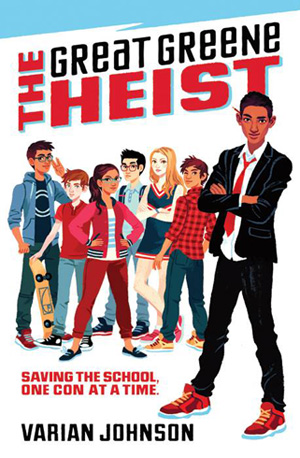 The Great Greene Heist
The Great Greene Heist
By Varian Johnson
Arthur A. Levine Books (an imprint of Scholastic)
$16.99
ISBN: 978-0-545-52552-7
Ages 10 and up
On shelves May 27th
What is the ultimate child fantasy? I’m not talking bubble gum sheets or wizards that tell you you’re “the chosen one”. Let’s think a little more realistically here. When a kid looks at the world, what is almost attainable but just out of their grasp for the moment? Autonomy, my friends. Independence. The ability to make your own rules and to have people fall in line. Often this dream takes the form of numerous orphan novels (it’s a lot easier to be independent if you don’t have any pesky parents swooping about), tales in which the child is some form of royalty (orphaned royalty, nine times out of ten), and other tropes. But for some kids, independence becomes a lot more interesting when it’s couched in their familiar, everyday, mundane world. Take middle school as one such setting. It’s a place a lot of kids know about, and it wouldn’t take much prodding for readers to believe that beneath the surface it’s a raging cesspool of corruption and crime. The joy of a book like The Great Greene Heist is manifold, but what I think I’ll take away from it best is author Varian Johnson’s ability to make this a story about a boy who knows how to do something very well (pulling cons) while also telling a compelling tale of a kid who knows what it means to be in charge and never abuses that power. If the ultimate child fantasy is to be in charge, the logical extension of that is to be the kind of person who is also a good leader. With that in mind, this book is poised to make a whole lotta kids very happy.
Since The Blitz at the Fitz the former con king Jackson Greene has gone straight. Trained in the art of conning by his own grandfather, Jackson’s the kind of guy you’d want on your side when things go down. Yet he seems perfectly content to put that all behind him, just tending the flowers of his garden club like he’s a normal kid or something. Normal, that is, before he gets wind that something shady is going on and it involves the upcoming school election. Gabriela de la Cruz (a.k.a. Gabby), the girl he inadvertently betrayed, is running for Class President against the ruthless Keith Sinclair. Worse? It looks like Sinclair and his dad have the principal in their pocket and that no matter what Gabby does she’ll be facing a defeat. Now it’s time for Greene to come out of retirement and assemble a crack team to use Keith and the principal’s worst instincts to their ultimate advantage. All it’s going to take is the greatest con Maplewood Middle School has ever seen.
To write a good con novel you have to be a writer confident in your own abilities. Johnson exudes that confidence, particularly when he takes risks. Since, at its essence, this is the story about a boy tricking a girl into doing what he wants, it would be easy for Johnson to slip up at any time and make the storyline either condescending or downright offensive. That he manages not to do this is nothing short of a minor miracle of modern writing. Much of this book is also actively engaged in the act of testing the reader’s sympathies. Johnson is misdirecting his readers as often as he is misdirecting his characters and he’s doing it with the given understanding that if they stick with the story they’ll be amply rewarded with more sympathetic motivations later on down the line. To do this in a book for kids is risky. You’re asking your readers to look at your hero as an antihero. And even if they’re sympathetic to his cause, will that translate into them continuing to read the book? In this case . . . yes.
One takeaway I took from this novel was the fact that Johnson really knows his age bracket. More to the point, he knows what kids today are really like. At first I found myself confused when I discovered that The Tech Club and The Gamer Club in this book were two very distinct and different entities. Under the old rules of middle school literature, anything that sniffed of video games or techie concerns would have been filed under “hopeless geekdom”. But in the 21st century we’re all geeks on some level. We’re all hooked up to our phones and computers. Big plot points in this book focus on the bribing of other kids with video games. The lines are blurring and at no point does anyone, even a bully, call another kid a nerd or geek. That isn’t to say that the bullies are nice or anything. It’s just that when it comes to base insults, some terms just don’t always carry the same cache. The nerds may make our toys but that still doesn’t mean a lot of us are going out and befriending them.
There’s been a lot of talk lately about the dearth of kids of color in books for children. Last year I tried to count as many middle grade books starring African-American boys and I topped out at around six or seven (and most of those were written by celebrities). With its truly multicultural cast (name me the last time you read a contemporary book for kids where TWO of the characters were Asian-American and not twins) and black boy hero dead front and center on the cover, we’re looking at a rare beast in the market. Author Varian Johnson also does a dandy job at avoiding certain tropes that librarians and teachers have grown to detest. For example, one way of making it clear what a character’s skin color is (or eye shape) is to compare them to food. I’m sure you’ve read your own fair share of books where the hero had “caramel colored skin” or “almond shaped eyes”. After a while you begin to wonder why the white kids aren’t being described as having “cottage cheese tinted cheeks” or “eyes as round as malted milk balls”. Johnson, for his part, is straightforward. When he wants to make it clear that someone’s black he just says they have “brown skin and black, curly hair”. See? How hard is that?
He also tackles casual racism with great skill and aplomb. At one point Jackson is facing the school’s senior administrative assistant. She says to him “Boys like you are always up to one thing or another.” Jackson’s response? “He hoped she meant something like ‘boys named Jackson’ or ‘boys who are tall,’ but he suspected her generalizations implied something else.” That is incredibly subtle for a middle school book. Some kids won’t pick up on it at all, while others will instantly understand what it is that Johnson is getting at. Because this character is minor (and her assumptions get neatly turned against her later) this storyline is not pursued, but that doesn’t mean it isn’t appreciated. Racism lives on long and strong in the modern world, but few authors for kids think it necessary to point out the fact. They should. It’s important.
Now you would think that since I walked into this knowing it was a kind of junior high Ocean’s 11 I’d have been on the lookout for the twist. All good con films have a twist. Sometimes the twist is good. Sometimes it’s unspeakably lame or capable of stretching your credulity to its limits. I am therefore happy to report that not only does The Great Greene Heist keep you from remembering that twist is coming, when it does come adult readers will be just as flummoxed by it as the kids.
If I were to change one thing about the book, it would be to include something additional. For some readers, keeping characters straight can be difficult. Johnson respects his readers’ instincts and intelligence, so he drops them almost mid-stream into the story. You have to get caught up with Jackson and Gabby’s falling out, and when we start our tale we’re in the aftermath of a once grand friendship. That’s fine, but had a character list been included in the beginning of the book as well, I would have had an easier time distinguishing between each new person we meet. I read this book in an early galley edition, so perhaps this problem will be changed by the time the book reaches publication, but if not then be aware that some readers may need a bit of help parsing the who is who right at the beginning.
You know, we talk a lot about the lack of diversity in our books for kids these days. There’s this two-headed belief that either kids won’t pick up a book with a kid of color on the cover and/or that such books are never fun. And certainly while it may be true that the bulk of multicultural literature for children does delve into serious subjects, there are exceptions to every rule. I look at this book and I think of Pickle by Kimberly Baker. I think of fun books that look amusing and will entice readers. Books that librarians and booksellers will be able to handsell with ease by merely describing the plot. With its fun cover, great premise, and kicky writing complete with twist, this book fulfills the childhood desire for autonomy while also knocking down stereotypes left and right. That it’s like nothing else out there for kids today is a huge problem. Let us hope, then, that it is a sign of more of the same to come.
On shelves May 27th.
Source: Galley sent from publisher for review.
Like This? Then Try:
- Pickle by Kim Baker – Similar, but less a con novel than a pranking novel. Both types of stories require that the kids be in charge and the adults fall in line.
- The Fourth Stall by Chris Rylander – If The Great Greene Heist has an Ocean’s 11 feel then The Fourth Stall is The Godfather. Nothing wrong with that.
- Griff Carver, Hallway Patrol by Jim Krieg – A highly underrated novel and almost completely forgotten thanks to its gawdawful cover. But this joke on the hard-boiled cop genre definitely reminded me of the tone Varian Johnson set with his own book.
- You Killed Wesley Payne by Sean Beaudoin – Perhaps only because it features cliques as distinct entities vying for power, but that’s enough for me. But it’s YA so make note of that as well.
First Sentence: “As Jackson Greene sped past the Maplewood Middle School cafeteria – his trademark red tie skewed slightly to the left, a yellow No. 2 pencil balanced behind his ear, and a small spiral-bound notebook tucked in his right jacket pocket – he found himself dangerously close to sliding back into the warm confines of scheming and pranking.”
Notes on the Cover: Yes. Yes and also thank you. Now granted, the original cover was pretty cool. Seen here:
But at least they kept the same artist. Now it has more of a movie poster feel. Nothing wrong with that. As long as Jackson himself is front and center that is all I care. Good show, Scholastic. Way to knock it out of the park!
Other Blog Reviews:
Professional Reviews:
- A star from Kirkus
- Publishers Weekly
Misc:
- The book has become a bit of a touchstone for diversity discussions as of late. Thanks in large part to Kate Messner independent bookstores are all working to sell it in droves in what they’re calling The Great Greene Heist Challenge. Impressively, author John Green even offered ten signed copies of The Fault in Our Stars to any bookstore in the U.S. that handsells at least 100 copies of The Great Green Heist in its first month of publication. No small potatoes, that. I certainly hope lots and lots of people will be attempting to read and buy this one.
- Read the story behind the story here.
Video: As of this review there is no book trailer for this book. I hereby charge a middle school somewhere in this country to make an Ocean’s 11 style trailer out of it. Make it and I will post it, absolutely. For a guide, I direct you to this Muppet version of that very thing.
Okay. Now do that with this book.
Blog: A Fuse #8 Production (Login to Add to MyJacketFlap)
JacketFlap tags: middle grade historical fiction, multicultural middle grade, Krista Russell, African-American kids, Best Books of 2013, 2013 middle grade fiction, 2013 historical fiction, African-American books, multicultural, Reviews, middle grade fiction, slavery, multicultural fiction, African-American history, Add a tag
 The Other Side of Free
The Other Side of Free
By Krista Russell
Peachtree Publishers
$16.95
ISBN: 978-1-56145-710-6
Ages 9-12
On shelves now
Have you ever read the adult book How I Became a Famous Novelist? Bear with me for a second here, I know what I’m doing. You see, in the title the author decides that he wants to become a New York Times bestseller. In the course of his quest he runs across a variety of different authors who embody a variety of different types of novels. His own aunt decides she wants to be a children’s author and sets about doing so by writing a work of historical middle grade fiction. The book is about a girl living in Colonial America who wants to be a cooper. In only a page or two author Steve Hely puts his finger on a whole swath of children’s books that drive librarians like myself mildly mad. They find familiar situations and alter very little aside from location and exact year to tell their tales. The result is an increasing wariness on my part to read any works of historical fiction, for fear that you’ll see the same dang story again and again. With all this in mind you can imagine the relief with which I read Krista Russell’sThe Other Side of Free. Not only is the setting utterly original (not to mention unforgettable) but the characters don’t fill the same little roles you’ll see in other children’s novels. If you have kids that have tired of the same old, same old, The Other Side of Free will give them something they haven’t seen before.
We’ve all heard of how slaves would escape to the North when they wished to escape for good. But travel a bit farther back in time to the early 18th century and the tale is a little different. At that point in history slaves didn’t flee north but south to Spain’s territories. There, the Spanish king promised freedom for those slaves that swore fidelity to the Spanish crown and fought on his behalf against the English. 13-year-old Jem is one of those escaped slaves, but his life at Fort Mose is hardly stimulating. Kept under the yoke of a hard woman named Phaedra, Jem longs to fight for the king and to join in the battles. But when at last the fighting comes to him, it isn’t at all what he thought it would be. A Bibliography of sources appears at the end of the book.
There are big themes at work here. What freedom is worth to an individual if it means yoking yourself to someone else. If militia work really does mean freedom, or just slavery of a new kind. Jem himself chafes under the hand of Phaedra, though I think it would be obvious, even to a kid reader, that he’s immature in more than one way. But with all that said, it’s the lighter moments that make the book for me. Omen the owl is a notable example of a detail that makes the book more than just a work of history. In this story Jem adopts an owlet and raises it as his own. In your standard generic fare the owl would be a beloved friend and companion, possibly ultimately dying for Jem in a heroic scene reminiscent of Hedwig’s death. Instead, the owl is hell on wings. A nasty, chicken-snatching, very real and wild creature that is, nonetheless, beloved of our hero. Again, expectations are upset. I love it when that happens.
I liked the individual lines Russell used to dot the text as well. For example, in an early character note about Phaedra the book describes her construction of a grass basket. “Her fingers snatched at the fronds again and again, until each strip was bent and shaped to her will.” It’s worth noting that it’s Jem who is saying this about her. Almost the whole book is told through his own perspective and, as such, may not be entirely trustworthy. He has his own prejudices to fight, after all. I also like Russell’s everyday descriptions. “Adine handed each man a jug of water. They drank until it ran down their faces, leaving tails like gray veins down their throats.” Beautifully put.
Honestly it would make a heckuva stage play. The settings are necessarily limited, with Jem spending most of his time in Fort Mose and the rest of it in St. Augustine. Not having been familiar with the people of Fort Mose before, I found myself incredibly anxious to learn what became of them. Russell ends the book on a hopeful note, but you cannot help but wonder. If there were freed slaves in Florida in 1739 then what happened when that state became the property of the English in 1763? All Russell says at that time is “At this time, the free Africans of Mose relocated to Cuba.” Kids will just have to extrapolate a happy ending for Jem and his friends from that.
A great work of historical fiction does a number of things. It introduces you to unfamiliar places and people. It establishes a kind of empathy for those people that you otherwise would never have met. It puts you in their shoes, if only for a moment. And most of all, it surprises you. Upsets your expectations, maybe. For most kids in America, the history of slavery is short and sweet. Slaves came from Africa. They escaped North. They were freed thanks in part to the Civil War. What more is there is say or to learn aside from some vague info on the Underground Railroad? Russell challenges these assumptions, bringing us a tale that is wholly new, but filled with facts. If the rote and familiar don’t suit you and you want a book that travels over new ground, you can hardly do better than The Other Side of Free. Smart and original, it’s a one-of-a-kind novel. Hardly the kind of thing you run across every day.
On shelves now.
Source: Galley sent from publisher for review.
Notes on the Cover: I don’t want to sound ungrateful. I can see what Peachtree was going for here. In this image you get the dense canopy of a Floridian forest. You even have a black boy on the cover (albeit completely turned away from the viewer, which is kind of a cheat). But all in all, whether it’s the art or the design or the color palette, this book is not the most visually appealing little number I’ve seen in all my livelong days. I’m having a devil of a time getting folks to pick it up of their own accord. One hopes that if it goes to paperback someday, maybe it’ll be given a cover worthy of its content.
Like This? Then Try:
- Elijah of Buxton by Christopher Paul Curtis
- Chains by Laurie Halse Anderson
- Jefferson’s Sons by Kimberly Brubaker Bradley
Blog: A Fuse #8 Production (Login to Add to MyJacketFlap)
JacketFlap tags: multicultural fiction, multicultural children's literature, book jacket nattering, multicultural middle grade, Uncategorized, Add a tag
You know why I’m looking forward to 2014? It’s not the fresh start that comes with every turn of the globe. It’s not the incipient birth of my second child (I lie . . . it is that, but for the purposes of this piece we’re going to pretend that it’s not). It’s not the fact that I’ve mistakenly thought it was 2014 already for half the year (this is what early galleys hath wrought).
It’s none of these. It is, in fact, the plethora, the godsend, the sheer number of books with kids of color on the middle grade covers coming out in 2014.
None of you have been blind to the fact that when a middle grade novel stars a kid of color, there is a 75% chance that you’re not going to see their face on the book jacket. Heck, Allie Bruce’s posts on the subject are worth the price of admission alone. Then there’s the fact that sometimes even finding kids of color can be a challenge (see: 2013 Middle Grade Black Boys: Seriously, People?). With that in mind I’ve been watching the galleys for the 2014 season and I am feeling cautiously optimistic. While the books that I’m about to list here are still just a miniscule percentage of the swath of middle grade (by which I mean, novels for kids between the ages of 9-12) titles out there, they mark a 400% improvement over . . . um . . . ever. Here’s what I’m seeing for Spring 2014 alone:
A Medal for Leroy by Michael Morpurgo
Nicely done. Big full-face with the dad in the background. Makes it clear it’s historical without feeling off-putting. Of course the cover originated in Britain, but we’ll take what we can get.
Eddie Red Undercover: Mystery on Museum Mile by Marcia Wells
The first in what appears to be a series, this is a SUPER rarity. Dark-skinned boy (who is NOT a sidekick or best friend) alone on the cover of a book that actually looks fun and not meaningful or historical. And a mystery at that? Somebody buy me a lottery ticket quick, because I think my luck’s about to change!
The Blossoming Universe of Violet Diamond by Branda Woods
I don’t care that it’s just half a face. It’s still a nice cover and I’m all for it.
Saving Baby Doe by Danette Vigilante
Contemporary Latino boy?! This is also wildly uncommon. Kind of dig the gorgeous cover design as well.
The Crossover by Kwame Alexander
What, you thought we got rid of all the silhouette-stand-ins-for-black-kids covers? Think again.
The Lion Who Stole My Arm by Nicola Davies
Another silhouette, but at least the title and cover blurb (which may or may not be on the American edition) are awesome.
Susan Marcus Bends the Rules by Jane Cutler
Look at this cover long enough and you might be convinced that the “Susan Marcus” mentioned in the title was the African-American girl at the center of the other girls’ attention. Nope. That girl isn’t even our heroine. A bit misleading but I sort of like the image so I’m torn.
Winter Sky by Patricia Reilly Giff
A close kin to the silhouette cover is the back-of-the-head cover where, again, you cannot determine the character’s race. That said, I actually like this one. Look at her head and hands and her race is instantly apparent (it’s a little harder to see here but trust me that when you see the actual book it will be clear). And due to the fact that there are 5 billion YA novels with white girls running away from the viewer, nothing wrong with a middle grade novel doing it’s own similar thing.
Painting the Rainbow by Amy Gordon
Like the “Susan Marcus” book, the boy pictured here is not the hero of the tale but someone being investigated (so to speak) by the two girls in the boat. This is, by the way, the only book with an Asian or Asian-American character I’ve seen with the sole exception of . . .
Secrets of the Terra-Cotta Soldier Ying Chang Compestine and Vinson Compestine
It’s historical (a rare fantasy set in Maoist China) and distinctly unique.
Almost Super by Marion Jensen
Maybe she’s not the heroine proper but the character of Juanita Johnson fills me with hope. She and Gum Girl should get together sometime and save the world.
Nightingale’s Nest by Nikki Loftin
Winner of the Most Blurbs for a Galley award of 2014.
Zane and the Hurricane: A Story of Hurricane Katrina by Rodman Philbrick
There is an understanding these days that you cannot CANNOT write a middle grade novel about Hurricane Katrina without the book being about a dog in some way. This title is no exception. It does, at first, look like a series of silhouettes but if you look at the actual book you’ll see it’s more detailed than that. I’m giving it points too for just looking like a book a kid might actually want to read.
Conclusions? As I mentioned before, Asian characters are more difficult than usual to find this publishing season. I was tempted to include The Dirt Diary by Anna Staiszewski in that rare category but I haven’t read the book so I wasn’t certain that I was correct. I’ve also not seen any books about Native American kids, but unless you’re Joseph Bruchac or Louise Erdrich they won’t be putting your face on the cover anyway (Written in Stone was 2013′s rare exception).
I would also be amiss in not mentioning the fact that these are just books that are featuring kids of color on their book jackets. I’m not mentioning the books that feature multicultural kids within the pages (just not on the covers). These would include titles like Upside Down in the Middle of Nowhere by Julie T. Lamana and The Sittin’ Up by Sheila P. Moses amongst many others. Books that I am incredibly grateful for, but feel like the publishers missed a golden opportunity somewhere down the road when it came to their covers. Ah well. There’s always next year.
By the way, I just know that since I’m listing this books from the galleys I’ve received that there are bound to be some covers I’ve missed. So lay ‘em on me! What’s also out there that I’m failing to note?
Blog: Finding Wonderland: The WritingYA Weblog (Login to Add to MyJacketFlap)
JacketFlap tags: Adventure, Fantasy/Sci-Fi, Multicultural Fiction, Add a tag
 It's not every day that you read a book set in Vienna that has really nothing to do with the stereotypical Vienna. I mean, there's the odd schnitzel, a few mentions of Mozart, but only in a passing kind of way. It's funny how some cities seem to... Read the rest of this post
It's not every day that you read a book set in Vienna that has really nothing to do with the stereotypical Vienna. I mean, there's the odd schnitzel, a few mentions of Mozart, but only in a passing kind of way. It's funny how some cities seem to... Read the rest of this post
Blog: A Fuse #8 Production (Login to Add to MyJacketFlap)
JacketFlap tags: multicultural, mysteries, Reviews, middle grade fiction, historical fiction, Best Books, Eerdmans Books for Young Readers, multicultural fiction, middle grade mysteries, middle grade historical fiction, multicultural middle grade, Best Books of 2013, Reviews 2013, 2013 reviews, 2013 middle grade fiction, 2013 chapter books, 2013 historical fiction, 2013 mysteries, Katie Quirk, Add a tag
 A Girl Called Problem
A Girl Called Problem
By Katie Quirk
Eerdmans Books for Young Readers
$8.00
ISBN: 97800-8028-5404-9
Ages 9-12
On shelves now.
Who says that mystery novels for kids all have to include the same tropes and settings? I tell you, half the time when a kid comes up to a reference desk asking for a mystery they think what they want is the standard white kids in suburbia model perfected by Encyclopedia Brown and his ilk. They’re wrong. What they really want is great writing and a good mystery with a twist they don’t see coming. So I will hereby give grand kudos and heaping helpfuls of praise to the librarian/bookseller/parent who hears a kid ask for a mystery and hands them Katie Quirk’s A Girl Called Problem. This book is a trifecta of publishing rarities. A historical novel that is also a mystery set in a foreign country that just happens to be Tanzania. Trust me when I say your shelves aren’t exactly filled to brimming with such books. Would that they were, or at the very least, would that you had as many good books as this one. Smart commentary, an honestly interesting storyline, and sharp writing from start to finish, Quirk quickly establishes herself as one author to watch.
The thing about Shida is that in spite of her name (in Swahili it would be “problem”) you just can’t get her down. Sure, her mom is considered a witch, and every day she seems to make Shida’s life harder rather than easier. Still, Shida’s got dreams. She hopes to someday train to be a healer in her village of Litongo, and maybe even a village nurse. In light of all this, when the opportunity arises for all of Litongo to pick up and move to a new location, Shida’s on board with the plan. In Nija Panda she would be able to go to school and maybe even learn medicine firsthand. Her fellow villagers are wary but game. They seem to have more to gain than to lose from such a move. However, that’s before things start to go terribly wrong. Escaped cattle. Disease. Even death seems to await them in Nija Panda. Is the village truly cursed, just unlucky, or is there someone causing all these troubles? Someone who doesn’t want the people of Litongo there. Someone who will do anything at all to turn them back. It’s certainly possible and it’s up to Shida to figure out who the culprit might be.
The trouble with being an adult and reading a children’s work of mystery fiction is that too often the answer feels like it’s too obvious. Fortunately for me, I’m terrible at mysteries. I’ll swallow every last red herring and every false clue used by the author to lead me astray. So while at first it seems perfectly obvious who the bad guys would be, I confess that when the switcheroo took place I didn’t see it coming. It made perfect sense, of course, but I was as blindsided as our plucky heroine. I figure if I honestly as a 35-year-old adult can’t figure out the good guys from the bad in a book for kids, at least a significant chunk of child readers will be in the same boat.
Now I’ve a pet peeve regarding books set in Africa, particularly historical Africa, and I was keen to see whether or not Ms. Quirk would indulge it. You see, the story of a girl in a historical setting who wants to be a healer but can’t because of her gender is not a particularly new trope. We’ve seen it before, to a certain extent. What chaps my hide is when the author starts implying that tribal medicines and healing techniques are superstitious and outdated while modern medicine is significantly superior. Usually the heroine will fight against society’s prejudices, something will happen late in the game, and the villagers will see that she was right all along and that she’ll soon be able to use Western medicine to cure all ills. There’s something particularly galling about storylines of this sort, so imagine my surprise when I discovered that Quirk was not going to fall into that more than vaguely insulting mindset. Here is an author unafraid to pay some respect to the religion of the villagers. It never dismisses curses but acknowledges them alongside standard diseases. Example: “Though Shida was certain Furaha should take medicine for malaria, she was equally certain she should guard the spirit house that night. Parasites were responsible for some sicknesses and curses for others, and in this case, they needed to protect against both.”
Quirk is also quite adept at using the middle grade chapter book format to tackle some pretty complex issues. To an adult reading this book it might be clear that Shida’s mother suffers from a severe form of depression. There’s no way the village would be prepared to handle this diagnosis, and Shida herself just grows angry with the woman who stays inside all the time. You could get a very interesting book discussion going with child readers about whether or not Shida should really blame her mother as vehemently as she does. On the one hand, you can see her point. On the other, her mother is clearly in pain. Similarly well done is the final discussion of witches. Quirk brings up a very sophisticated conversation wherein Shida comes to understand that accused witches are very often widows who must work to keep themselves alive and that, through these efforts, acquire supposedly witchy attributes. Quirk never hits you over the head with these thoughts. She just lets her heroine’s assumptions fall in the face of close and careful observation.
All this could be true, but without caring about the characters it wouldn’t be worth much. I think part of the reason I like the book as much as I do is that everyone has three dimensions (with the occasional rare exception). Even the revealed villain turns out to have a backstory that explains their impetus, though it doesn’t excuse their actions. As for Shida herself, she may be positive but she’s no Pollyanna. Depression hits her hard sometimes too, but through it all she uses her brain. Because she is able to apply what she learns in school to the real world, she’s capable of following the clues and tracking down the real culprit behind everyone’s troubles. Passive protagonists have no place in A Girl Called Problem. No place at all.
Finally, in an era of Common Core Standards I cannot help but notice how much a kid can learn about Tanzania from this book. Historical Tanzania at that! A Glossary at the back does a very good job of explaining everything from flamboyant trees to n’gombe to President Julius Nyerere’s plan for Tanzania. There are also photographs mixed into the Glossary that do a good job of giving a contemporary spin on a historical work.
Windows and mirrors. That’s the phrase used by children’s literature professionals to explain what we look for in books for kids. We want them to have books that reflect their own experiences and observations (mirrors) and we also want them to have books that reflect the experiences and observations of kids living in very different circumstances (windows). Mirror books can be a lot easier to recommend to kids than window books, but that just means you need to try harder. So next time a 9-12 year-old comes to you begging for a mystery, upset their expectations. Hand them A Girl Called Problem and bet them they won’t be able to guess the bad guy. In the process, you might just be able to introduce that kid to their latest favorite book.
On shelves now.
Source: Galley sent from publisher for review.
Like This? Then Try:
- A Girl Named Disaster by Nancy Farmer
- A Long Walk to Water by Linda Sue Park
- Burn My Heart by Beverly Naidoo
- The Witch of Blackbird Pond by Elizabeth Speare
Notes on the Cover: Now was that so hard? We ask and we ask and we ask for brown faces on our middle grade fiction and still it feels like pulling teeth to get it done. Eerdmans really blew this one out of the water, and it seems they spared no expense. The book jacket is the brainchild of Richard Tuschman who you may know better as the man behind the cover of Claire Vanderpool’s Newbery Award winning Moon Over Manifest. Beautiful.
Other Blog Reviews: Loganberryblog
Professional Reviews: A star from Kirkus
Misc:
- This is utterly fascinating. In this post author Katie Quirk talks about the process that led to the current (and truly lovely) cover.
- And here’s the story behind the book itself.
- And Ms. Quirk shares what a typical day for Shida might look like in this video.
Blog: Finding Wonderland: The WritingYA Weblog (Login to Add to MyJacketFlap)
JacketFlap tags: Review, Adventure, Historical Fiction, Middle Grade, Mystery, Guy Appeal, Multicultural Fiction, Add a tag
 In the world of judging a book by its cover, I'll admit, I caved. I was interested in this novel solely because of its cover, and because it was put out by a Canadian press. I find that I enjoy historical fiction from Canada, because it's generally... Read the rest of this post
In the world of judging a book by its cover, I'll admit, I caved. I was interested in this novel solely because of its cover, and because it was put out by a Canadian press. I find that I enjoy historical fiction from Canada, because it's generally... Read the rest of this post
Blog: Finding Wonderland: The WritingYA Weblog (Login to Add to MyJacketFlap)
JacketFlap tags: Multicultural Fiction, Fantasy/Sci-Fi, Guy Appeal, A Cybilsm?, Review, Adventure, Add a tag
 The adventures I have, when I randomly buy, pick up, or otherwise gank books! Once again, I am SUPER EXCITED because I've found another Cybils contender so early in the year. I'm a Luddite at heart, and I have had access to ereaders for years, but... Read the rest of this post
The adventures I have, when I randomly buy, pick up, or otherwise gank books! Once again, I am SUPER EXCITED because I've found another Cybils contender so early in the year. I'm a Luddite at heart, and I have had access to ereaders for years, but... Read the rest of this post
Blog: Finding Wonderland: The WritingYA Weblog (Login to Add to MyJacketFlap)
JacketFlap tags: Reviews, Romance, Realistic Fiction, Multicultural Fiction, AF, Add a tag
 Reader Gut Reaction: Gadget Girl: The Art of Being Invisible, by Suzanne Kamata, comes out in May, but I've been cleared by the author to get some buzz going—and I'm thrilled to be able to do so with a book that deftly handles many facets of the... Read the rest of this post
Reader Gut Reaction: Gadget Girl: The Art of Being Invisible, by Suzanne Kamata, comes out in May, but I've been cleared by the author to get some buzz going—and I'm thrilled to be able to do so with a book that deftly handles many facets of the... Read the rest of this post
Blog: Finding Wonderland: The WritingYA Weblog (Login to Add to MyJacketFlap)
JacketFlap tags: Reviews, Middle Grade, Humor, Fantasy/Sci-Fi, Guy Appeal, Multicultural Fiction, AF, Add a tag
 Reader Gut Reaction: I've been meaning to read Geeks, Girls and Secret Identities for quite a while, because the author, Mike Jung, is an online buddy and avid blogger, and he's also local to the Northern California area and this is his debut. After... Read the rest of this post
Reader Gut Reaction: I've been meaning to read Geeks, Girls and Secret Identities for quite a while, because the author, Mike Jung, is an online buddy and avid blogger, and he's also local to the Northern California area and this is his debut. After... Read the rest of this post
View Next 25 Posts



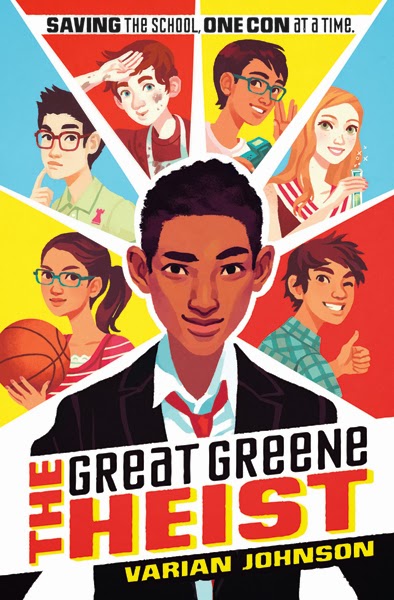
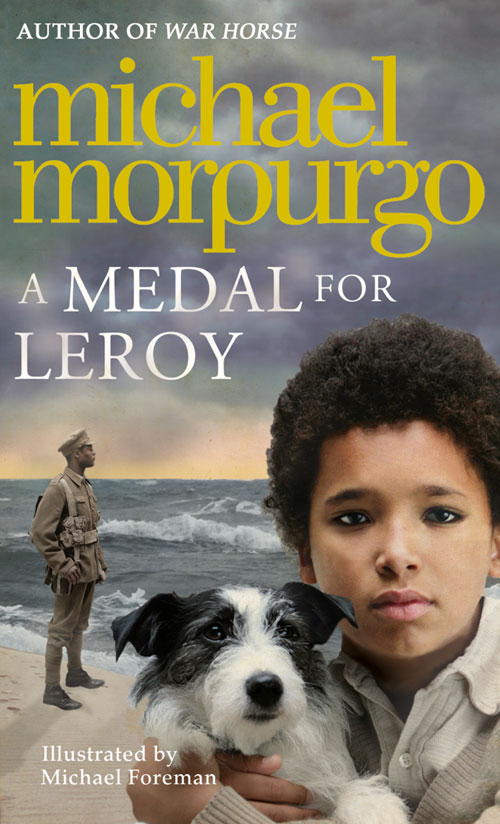


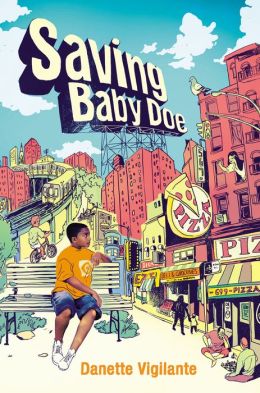
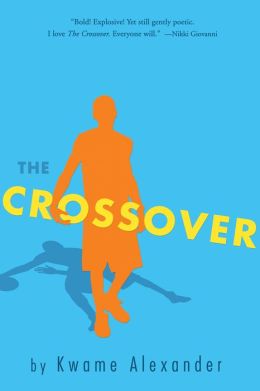
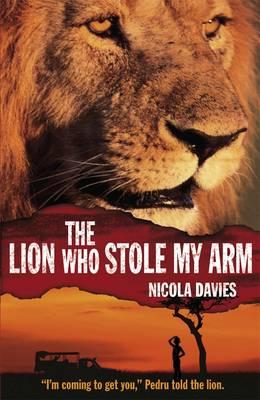
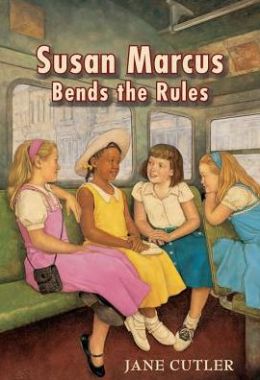
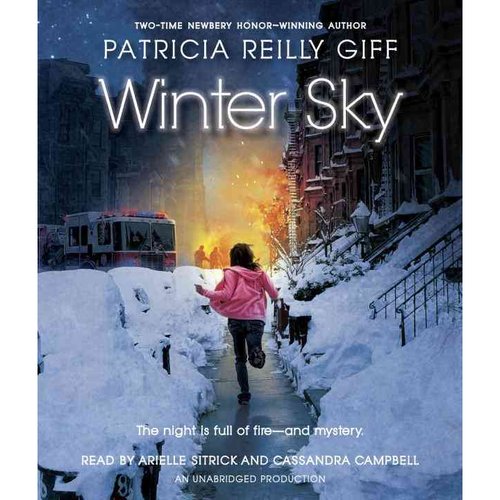

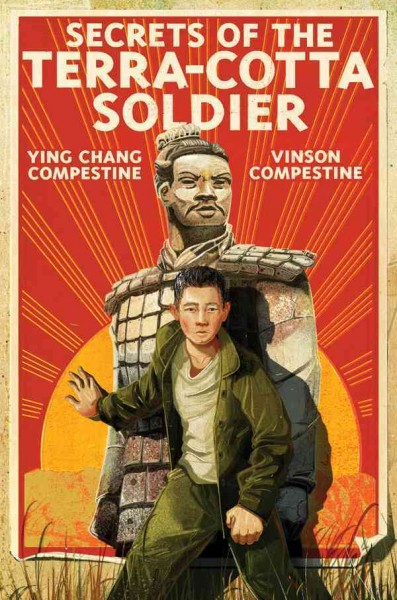
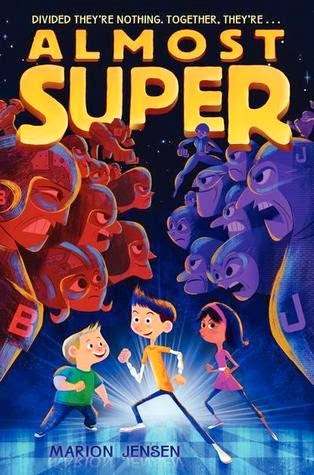

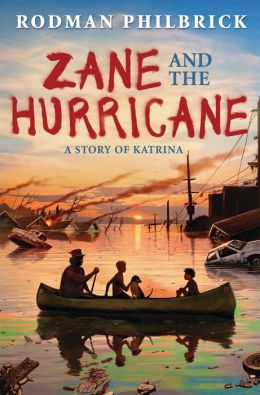
Loved this book! So glad it’s getting rereleased.
The poop did make me gag BUT less than I might gagged when I was 11. (Sensitive little thing!) I loved the friendship. I loved the economic situations the narrator found himself in. I even loved the watchman. Hey! Poop is funny. (Unless, well never mind. I spend a lot of time with a 2-year-old these days.)